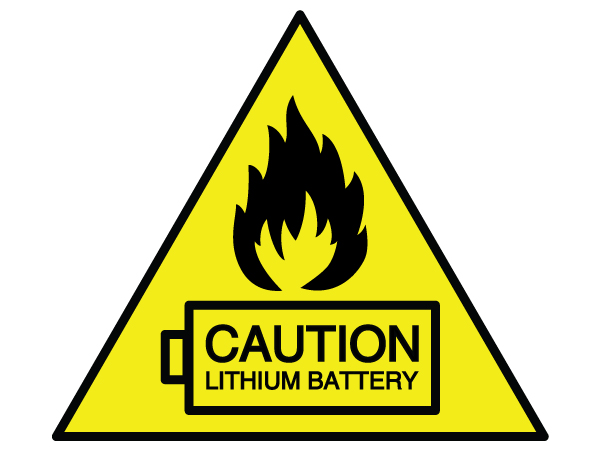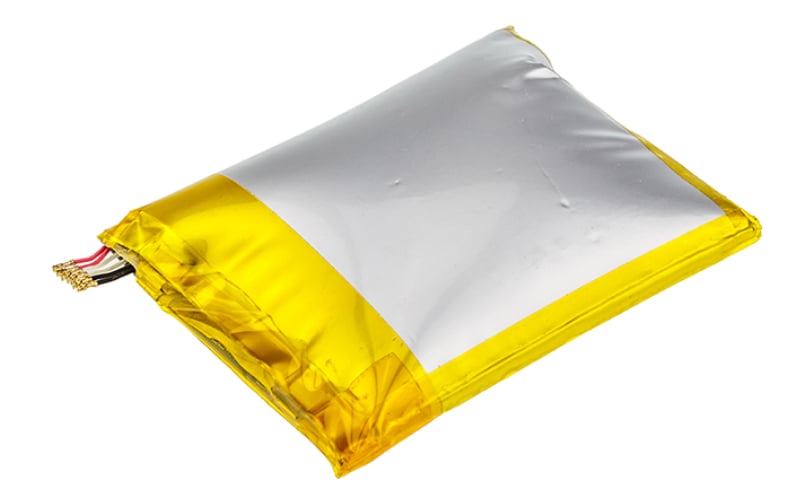Tel:
+86 13829170976
Email:
[email protected]
With electronics becoming more portable and lightweight, they require batteries that offer long hours of battery life before recharging. Lithium batteries are becoming common place in electronics such as smartphones, laptops, and tablets as they can last for up to 2 years to 5 years. However, failures can cause lithium battery packs to malfunction. The type of problem will be based on the construction of the battery pack, how it is charged, how it is used and handled, and environmental factors.

One of the main issues that we hear about constantly in the news is when a lithium battery pack has caught fire in a smartphone, laptop, or other device. Then the manufacturer has to institute a massive recall for the battery packs. In these rare instances, the failure was due to metallic microscopic particles that came into contact with parts inside the battery cell. This contact caused a short circuit.
While minor short circuits typically will only cause the lithium battery to self-discharge without any major explosion or combustion, major short circuits can lead to more drastic negative results. They occur when the metal particles accumulate in one specific spot. A large amount of current flows between the negative and positive plates as it creates heat. As the heat builds, it can begin to corrode the insulation layer; this process is called thermal runaway.
The presence of metallic particles is typically a problem with the manufacturing process when creating complex assemblies that generate a large amount of metallic dust. Having quality control processes and cutting down on the amount of dust created by using clean rooms can prevent this type of failure from occurring.
Puncture and leakage can be found all throughout the shipping and transportation process, as well as when end users handle lithium battery packs. A puncture can happen if the lithium battery comes into contact with sharp objects, becomes dropped where the casing is damaged, or experiences other mechanical stresses.
The puncture can cause the electrolyte within the battery to leak out. The amount of leakage will depend on the size of the battery pack and the number of batteries that have been punctured, as there may only be a small amount of leakage from tiny cell pouches. Punctures and leakage can be dangerous.

Users who have electrolyte leakage should take the necessary precautions to not come in contact with the liquid or the electrolyte residue. The electronics that come in contact with the electrolyte leakage can also short circuit.
You may notice that the battery enclosure is large and bulging. This problem is caused by the lithium battery swelling. Swelling can occur for a number of reasons. For example, moisture may have intruded into the battery pack. Overcharging is also a common reason for battery pack swelling. Aging can also cause the battery pack to swell. As it ages, the battery pack can cause an elevation in temperatures.

Example of a swollen lithium battery pack.
The best way to deal with battery pack swelling is to prevent the battery from getting wet and to not have the battery constantly charging on a charger. With the pack constantly charging, it can cause the battery to age faster.
Using the incorrect charger for the lithium battery pack can also cause a range of problems. Most battery pack chargers for lithium-ion batteries are designed to prevent overcharging. However, using the wrong charger can cause overcharging or over voltage of the lithium battery pack as well as swelling.
In addition, a lithium battery pack should never be charged in cold temperatures (below 32°F). Charging at this temperature can cause lithium plating (this is when the lithium-ion collects along the anode's surface as metallic lithium becomes deposited there). This plating cannot be removed; it becomes permanent. Once this occurs, the battery becomes more susceptible to damage such as high rate charging that can lead to short circuits. It can also become more easily damaged from crushing or impacts.
People using lithium battery packs have to be careful of over-discharge as much as overcharging of the battery. Lithium-ion battery chemistries should never have the voltage fall below 2 volts. This issue can happen when the battery is placed into storage for long periods of time or when discharged too much. With the voltage below 2 volts, both the cathode and the anode begin to break down.
The anode current collector will start to dissolve, as the copper dissolves into the electrolyte. The copper ions begin to precipitate into metallic copper that can cause a short circuit when the battery is charged above 2 volts. Meanwhile, the cathode begins to release oxygen; the battery will start to experience permanent capacity loss after a few cycles.
Using the incorrect charger for the lithium battery pack can also cause a range of problems. Most battery pack chargers for lithium-ion batteries are designed to prevent overcharging. However, using the wrong charger can cause overcharging or over voltage of the lithium battery pack as well as swelling.
In addition, a lithium battery pack should never be charged in cold temperatures (below 32°F). Charging at this temperature can cause lithium plating (this is when the lithium-ion collects along the anode's surface as metallic lithium becomes deposited there). This plating cannot be removed; it becomes permanent. Once this occurs, the battery becomes more susceptible to damage such as high rate charging that can lead to short circuits. It can also become more easily damaged from crushing or impacts.
People using lithium battery packs have to be careful of over-discharge as much as overcharging of the battery. Lithium-ion battery chemistries should never have the voltage fall below 2 volts. This issue can happen when the battery is placed into storage for long periods of time or when discharged too much. With the voltage below 2 volts, both the cathode and the anode begin to break down.
The anode current collector will start to dissolve, as the copper dissolves into the electrolyte. The copper ions begin to precipitate into metallic copper that can cause a short circuit when the battery is charged above 2 volts. Meanwhile, the cathode begins to release oxygen; the battery will start to experience permanent capacity loss after a few cycles.